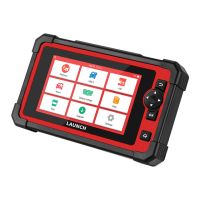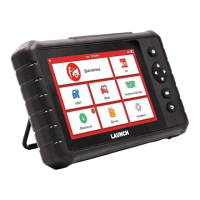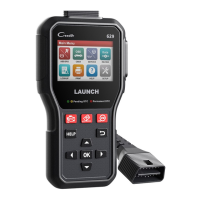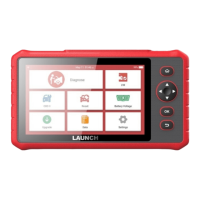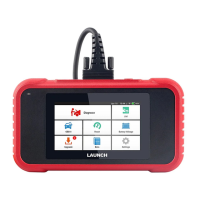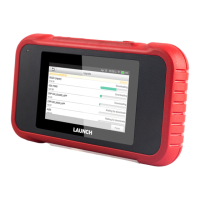16
www.x431.com +86 755 8455 7891
2.7 DTCs and MIL Status
When the vehicle’s on-board computer detects a failure in an emissions-
related component or system, the computer’s internal diagnostic program
assigns a diagnostic trouble code (DTC) that points to the system (and
subsystem) where the fault was found. The diagnostic program saves the code
in the computer’s memory. It records a “Freeze Frame” of conditions present
when the fault was found, and lights the Malfunction Indicator Lamp (MIL).
Some faults require detection for two trips in a row before the MIL is turned on.
Note: The “Malfunction Indicator Lamp” (MIL) is the accepted term used
to describe the lamp on the dashboard that lights to warn the driver that an
emissions-related fault has been found. Some manufacturers may still call this
lamp a “Check Engine” or “Service Engine Soon” light.
There are two types of DTCs used for emissions-related faults: Type “A” and
Type “B.” Type “A” codes are “One-Trip” codes; Type “B” DTCs are usually
Two-Trip DTCs.
When a Type “A” DTC is found on the First Trip, the following events take
place:
• The computer commands the MIL “On” when the failure is rst found.
• If the failure causes a severe misfire that may cause damage to the
catalytic converter, the MIL “ashes” once per second. The MIL continues
to ash as long as the condition exists. If the condition that caused the MIL
to ash is no longer present, the MIL will light “steady” On.
• A DTC is saved in the computer’s memory for later retrieval.
• A “Freeze Frame” of the conditions present in the engine or emissions
system when the MIL was ordered “On” is saved in the computer’s memory
for later retrieval. This information shows fuel system status (closed loop or
open loop), engine load, coolant temperature, fuel trim value, MAP vacuum,
engine RPM and DTC priority.
When a Type “B” DTC is found on the First Trip, the following events take
place:
• The computer sets a Pending DTC, but the MIL is not ordered “On.”
“Freeze Frame” data may or may not be saved at this time depending on
manufacturer. The Pending DTC is saved in the computer’s memory for
later retrieval.
• If the failure is found on the second consecutive trip, the MIL is ordered “On.”
“Freeze Frame” data is saved in the computer’s memory.

